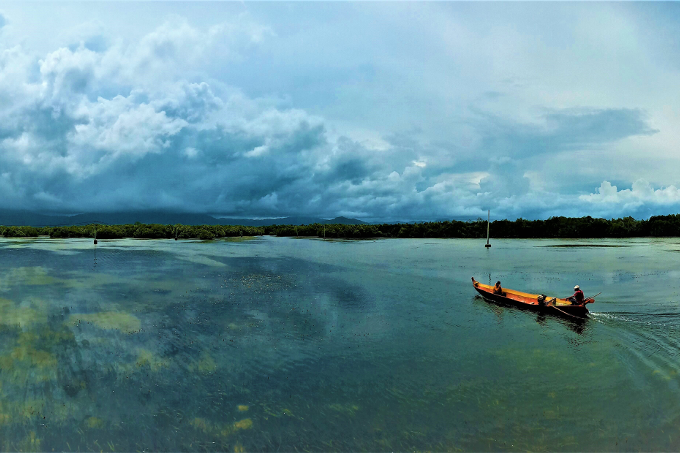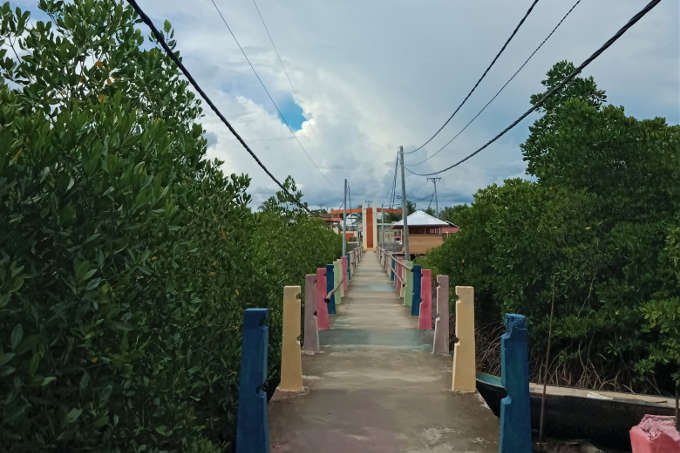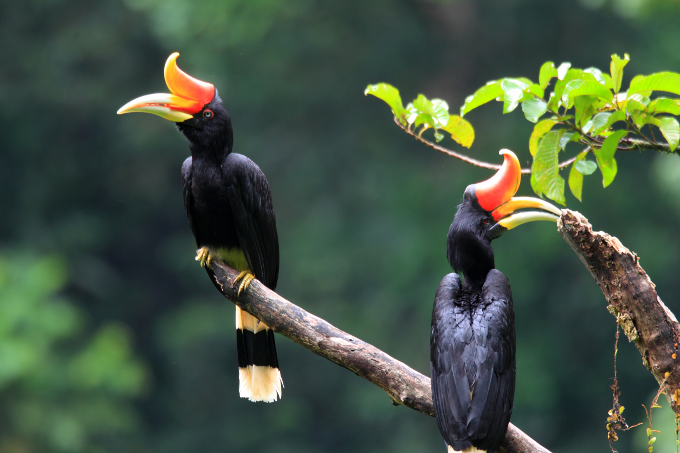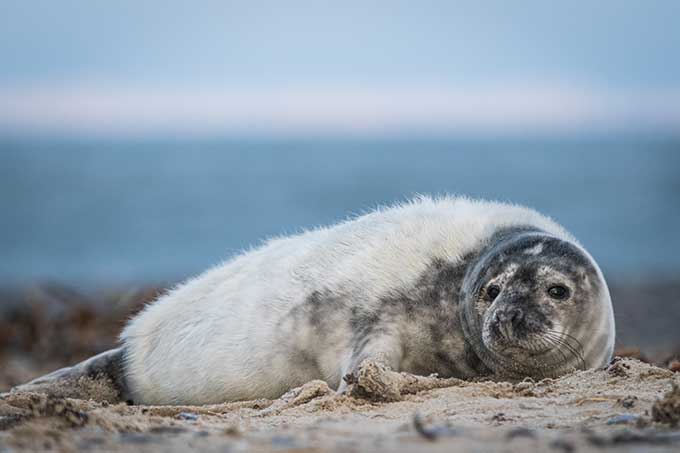Mangrove conservation in Indonesia
Southeast Asia’s natural coast guards need our help
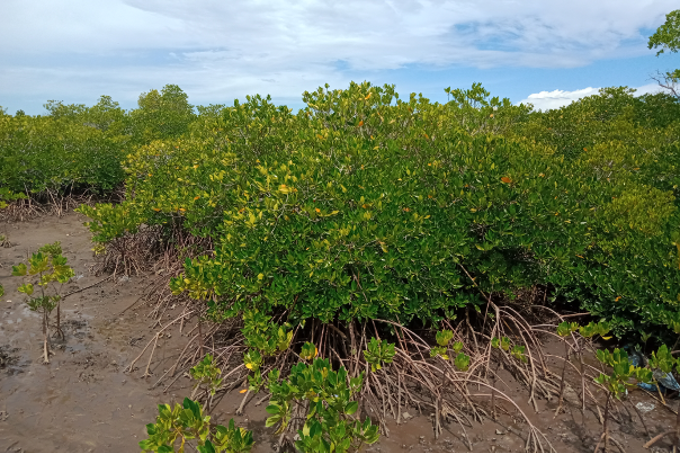
Over millions of years, mangrove trees developed sophisticated adaptations to withstand harsh coastal environments. - photo: Burung Indonesia/ Dian Kusdini
With more than 17,000 islands and over 54,000 kilometres of tropical coastline, Indonesia encompasses the largest area of mangrove forests of any country worldwide. However, the archipelago is experiencing alarming rates of mangrove loss: Only 3 million hectares of mangroves remain, representing 65% of its original area, according to recent studies. This means that roughly one third of all mangroves in Indonesia have been destroyed, most of them in the last 30 years. In many areas, this portion is much higher, as is the case in the project region in the West of Gorontalo province on Sulawesi Island. There, approximately 60% of the original mangrove area have been destroyed, largely due to the rapid development of aquaculture farms.
Turning the tide of mangrove loss
The consequences of mangrove degradation are increasingly apparent in coastal communities along the shores of Gorontalo province. With their vital ecosystem services, mangroves are particularly important for local fishermen and the livelihoods of their families. They provide breeding grounds for many fish species and other marine organisms, and filter sediments and nutrients that would otherwise suffocate coral reefs offshore. As sea levels rise and storm surges become more frequent and severe due to climate change, the lack of natural protection provided by mangroves exacerbates the negative consequences for local inhabitants: Many settlements now face increased levels of coastal erosion and severe damages to their infrastructure. Consequently, mangroves are increasingly recognized as indispensable allies to mitigate and adapt to the climate crisis.
-
Mangroves and their ecosystem services are indispensable for Indonesia's coastal communities. - photo: Burung Indonesia/ Made Chandra
-
View of the floating village Torosiaje in Pohuwato Regency in Gorontalo Province. - photo: Burung Indonesia/ Dian Kusdini
-
The path to the floating village Torosiaje leads through mangroves. - photo: Burung Indonesia/ Dian Kusdini
-
Mangroves secure the livelihoods of local fishermen and their families. - photo: Burung Indonesia/ Dian Kusdini
-
Mangroves protect the coasts from erosion, strong waves, tidal currents and storms. - photo: Burung Indonesia/ Made Chandra
-
Mangroves are valuable habitats for many species. - photo: Burung Indonesia/ Patma Santi
-
Mangroves are cleared at alarming rates, among others for aquaculture ponds. - photo: NABU/ Martin Baumann
Upscaling mangrove conservation and sustainable use practices
Together with our Indonesian BirdLife Partner Burung Indonesia, we support six coastal communities in the western part of Pohuwato Regency in Gorontalo Province to protect the remaining mangrove forests and identify areas suitable for restoration. The project will bring together all relevant stakeholders in the region to join forces for improved mangrove conservation and management.
Project activities include:
Monitoring
We improve the monitoring of remaining mangrove forests by training and equipping monitoring teams in each of the communities and by developing protocols for data collection and analysis. The results will be shared with state authorities and scientists to improve the assessment of larger-scale trends in the whole Bay of Tomini, and to support law enforcement where state regulations for the protection of mangroves are infringed.
Identifying areas suitable for restoration
Based on monitoring data, we identify areas that are most suitable for restoration efforts in cooperation with government agencies.
Environmental education and capacity building
We promote mangrove conservation and restoration and empower local communities to contribute to limiting the degradation of mangroves in their areas.
Securing livelihoods
We develop sustainable income opportunities based on mangrove products. These could be snacks or herbal teas, as well as handicrafts, natural dyes or furniture made of a range of suitable mangrove plants. Additionally, we work with aquaculture farmers and implement measures that support both the productivity in their ponds and mangrove rehabilitation in adjacent sites.
Ecotourism
We investigate the potential to integrate mangroves and their protection into ecotourism offers in the region such as birdwatching and diving - with both activities benefitting enormously from intact and large mangrove areas.
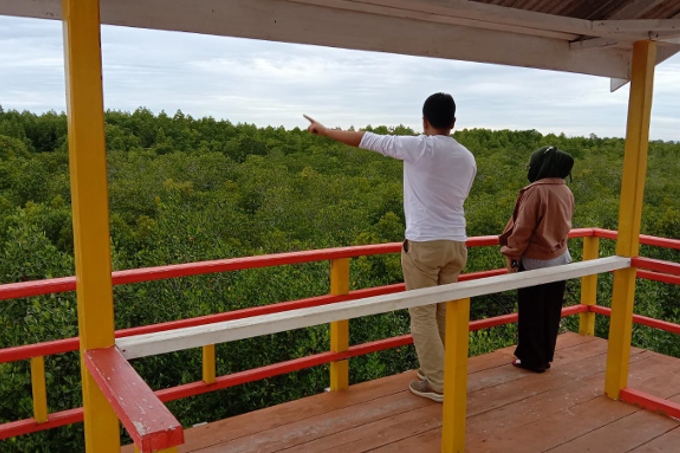
In Sulawesi, we join hands with Burung Indonesia and six coastal communities to protect remaining mangrove forests and identify areas suitable for restoration. - photo: Burung Indonesia/ Abdullah Kadir Diko
Project facts
Project title
Sustainable Development and Mangrove Conservation in the Bay of Tomini
Country/Region
Indonesia, Sulawesi, Pohuwato Regency in Gorontalo Province
Period
October 2022 to March 2026
Partners
Burung Indonesia
Sponsored by / Supported by
German Federal Ministry for Economic Cooperation and Development (BMZ)
With this project we are contributing to the following SDGs
SDG 1, SDG 5, SDG 8, SDG 12, SDG 13, SDG 14, SDG 15
Related topics
Like many-fingered hands, their roots reach underwater, finding a hold in muddy soils. But what happens when there’s nothing to hold onto? Mangrove forests are under massive pressure worldwide. Conservationist Patma Santi tells us how to save them. more →
Hutan Harapan, the "forest of hope", is a tropical lowland forest in Sumatra, Indonesia, and one of our most precious conservation and restoration programmes. The forest is one of the last refuges for endangered species and provides countless ecosystem services. more →
Marine ecosystems are under severe pressure from rising sea levels and increasing global average temperatures due to climate change. Pollution, destruction and overfishing also wreak enormous damage. NABU works to preserve the world’s oceans and coastlines. more →

